Key takeaways:
- Telehealth enhances healthcare access, particularly for underserved populations and those in rural areas.
- Convenience and reduced stress are significant benefits, allowing patients to receive care without the usual barriers.
- Challenges include technological barriers and limited physical examinations compared to in-person visits.
- Preparation is key for effective telehealth use, including organizing medical information and ensuring a quiet environment for consultations.
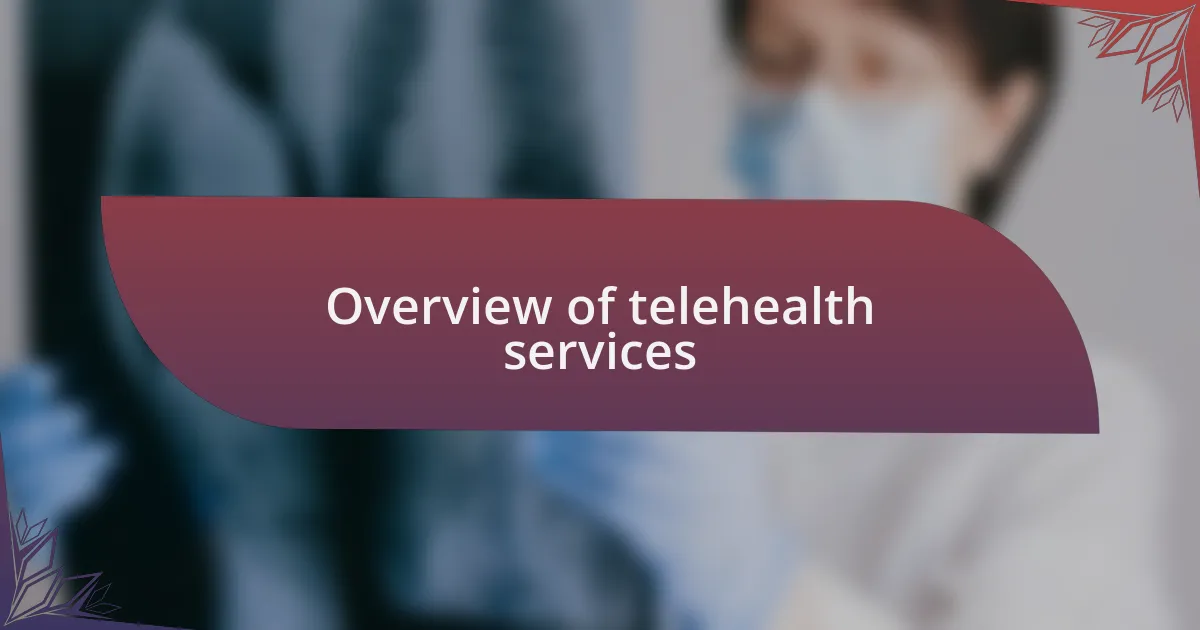
Overview of telehealth services
Telehealth services have transformed how we access healthcare, enabling patients to consult with healthcare professionals from the comfort of their homes. I vividly remember the first time I used a telehealth platform; my initial skepticism quickly faded when I realized how straightforward and efficient it was. Have you ever thought about how much time and energy you save when you skip the waiting room?
These services encompass a range of offerings, including virtual visits, remote monitoring, and health education. It’s fascinating to see how something as simple as a video call can ensure I receive quality care without the hassle of travel. I found it particularly comforting that I could discuss my health concerns directly with my doctor in a relaxed setting, making me feel more at ease.
Moreover, telehealth can significantly improve access for underserved populations. When I think about those living in rural areas who often have to travel great distances for medical attention, the impact of telehealth becomes even clearer. It’s thought-provoking to consider: could this technology bridge the gap in healthcare disparities in the long run?
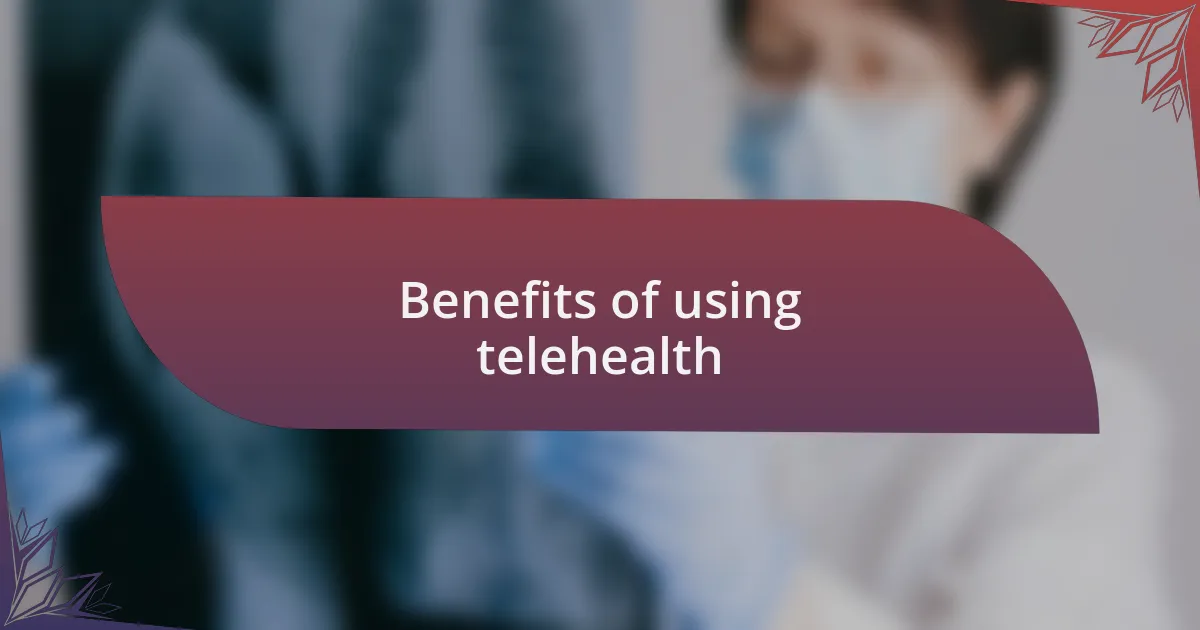
Benefits of using telehealth
Telehealth offers remarkable convenience, allowing patients to receive care without the typical barriers. I recall a time when a lingering cough kept me awake at night. Instead of driving to the clinic, I simply logged into a virtual appointment and spoke with my doctor in minutes. How wonderful is it that healthcare can be that accessible?
One of the major benefits I’ve experienced is the reduced stress that comes with telehealth. I remember feeling anxious before in-person visits, surrounded by sick patients. Now, I can focus on my health in my own space, which surprisingly makes me feel more open during consultations. Isn’t it interesting how comfort can lead to more honest conversations about our well-being?
Additionally, the flexibility of scheduling is something I truly appreciate. There have been instances where I’ve had urgent questions but couldn’t find time in my busy day. With telehealth, I can choose appointment times that align with my schedule, which often happens after hours. Isn’t it great to know that healthcare can adapt to our lives instead of the other way around?
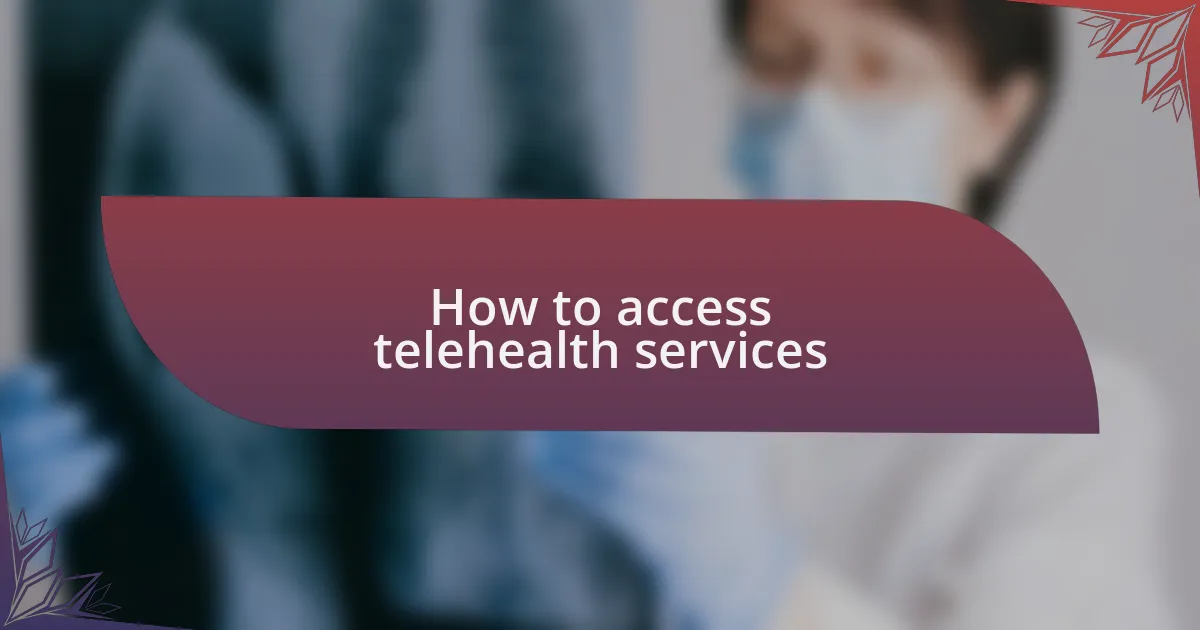
How to access telehealth services
Accessing telehealth services is surprisingly straightforward. Typically, it begins with finding a provider that offers virtual appointments, which many healthcare practices do now. I remember my initial experience was as simple as visiting their website and navigating to the telehealth section; a few clicks later, I was set up with a virtual consultation right from my living room.
Once you’ve selected a provider, you’ll usually need to create an account or log in to an existing one. I was a bit nervous about this step, as it required entering personal information. However, I found that most platforms have user-friendly interfaces, guiding you through the process seamlessly. After communicating with customer support for any questions I had, I felt truly empowered to take control of my healthcare.
Finally, for the actual appointment, having a reliable device and stable internet connection is key. I recall scrambling to find a quiet corner at home before my first telehealth visit to minimize distractions. It made a world of difference, allowing me to focus entirely on my healthcare without interruption. Have you ever thought about how a simple setup can enhance your entire healthcare experience?
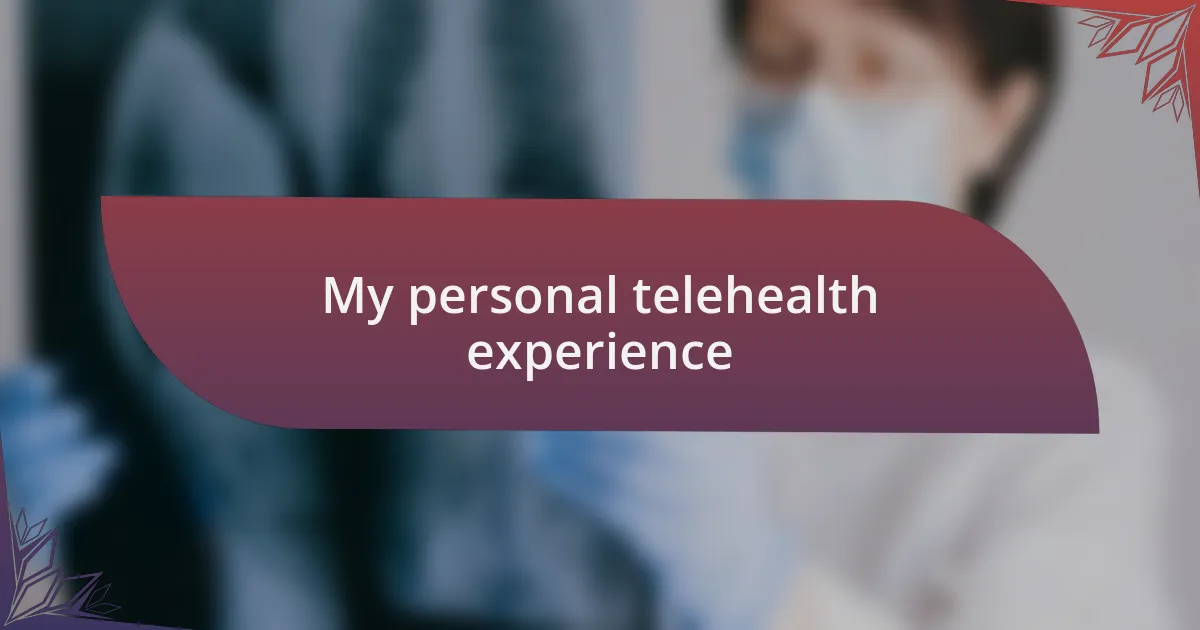
My personal telehealth experience
I remember my very first telehealth appointment vividly. As I sat in my kitchen, I felt a mix of excitement and anxiety. Would it feel the same as being in a doctor’s office? It turned out, I was pleasantly surprised by how comfortable and personal it felt, as if I was talking to a healthcare professional who truly cared, even behind a screen.
During that virtual consultation, I could see my doctor’s face, which helped ease my initial worries. I found that discussing my health concerns was surprisingly easy, and I appreciated the ability to talk about sensitive topics in the privacy of my own home. Have you ever experienced that sense of relief when you realize your healthcare provider is genuinely listening to you?
After my appointment, I felt a sense of empowerment. Instead of driving home from the clinic with a bunch of paperwork, I received my treatment plan instantly in my email. It made me realize how this new approach not only saved time but also kept me engaged in my health journey. Do you think more people might benefit from such efficient healthcare experiences?
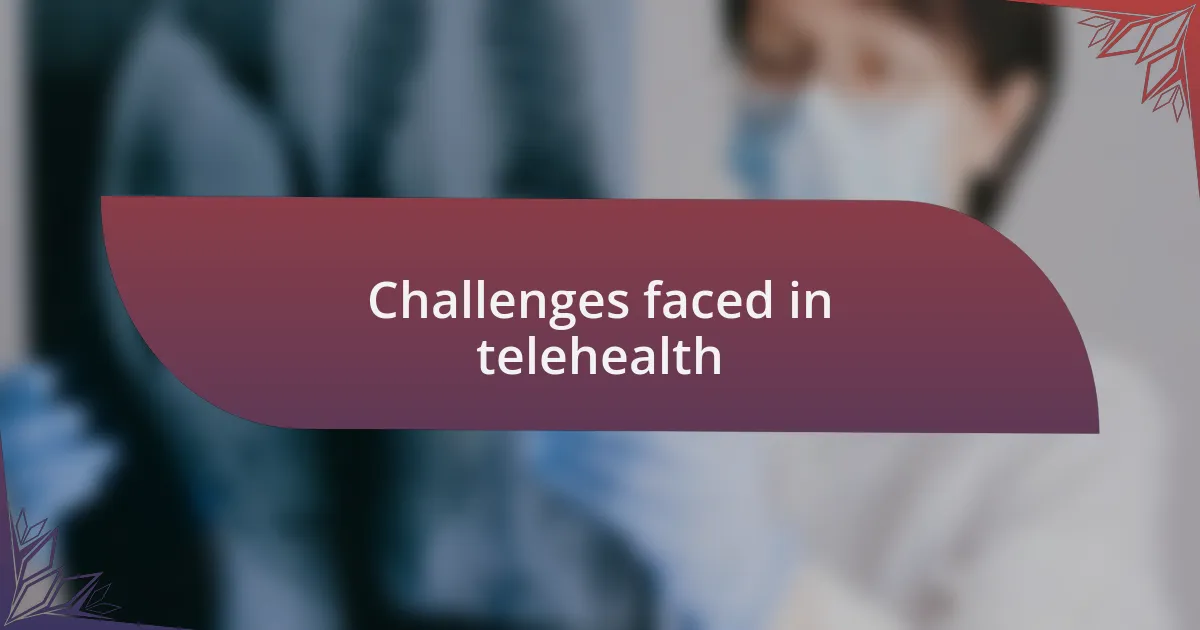
Challenges faced in telehealth
One challenge I faced during my telehealth experience was the technological barrier that sometimes reared its head. There were moments when my internet connection faltered, leading to frustrating interruptions. Have you ever been on a crucial call, only to have it drop at the worst possible moment? For me, it felt a bit like being on a roller coaster of emotions, where just as I was getting to the heart of my concern, technology would throw a wrench in the conversation.
Another aspect that stood out was the limited physical examination compared to an in-person visit. I remember mentioning a persistent pain, and while my doctor could ask questions and offer advice, I felt a sense of disconnect not being able to have a proper hands-on assessment. Isn’t it strange how much we rely on those physical cues? It made me question the extent to which a virtual interaction could fully capture the nuances of my health.
Lastly, I noticed that not all healthcare providers were equally adept at conducting virtual consultations. Some healthcare professionals seemed less comfortable with the platform than others, which made the experience feel a bit uneven. It got me thinking: how crucial is it for providers to adapt to these new modalities to ensure patients receive the best possible care? The inconsistency left me pondering if some patients might not have the same positive experience I did.
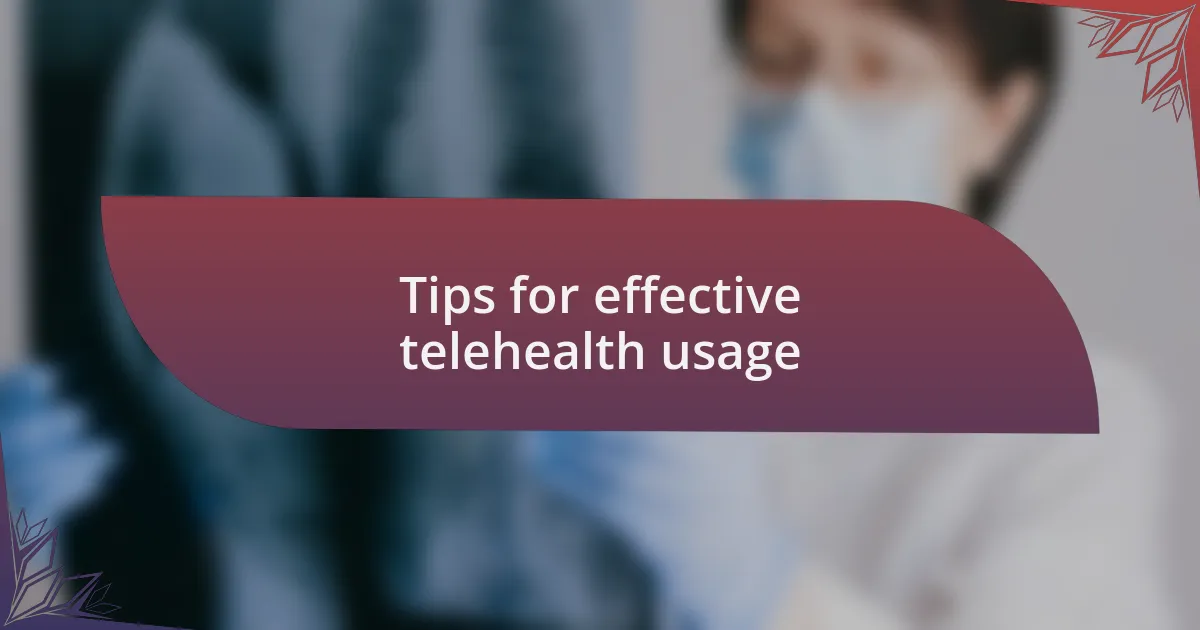
Tips for effective telehealth usage
When using telehealth services, preparation is essential for a smooth experience. I learned that having all my medical information, like a list of medications and any symptoms documented, at my fingertips made the consultation more efficient. Have you ever been caught off guard, trying to remember something important during a call? Trust me, it’s much easier when everything is organized beforehand.
Another tip I found helpful was to choose a quiet and comfortable environment for my appointments. The first time I tried telehealth, I was in a bustling café, and the background noise made it hard to focus. It really struck me that the setting could significantly affect the quality of my interaction. Don’t you think a calm space allows for more meaningful conversations about health?
Finally, I realized the importance of clear communication throughout the session. If something wasn’t entirely clear to me, I made it a point to ask follow-up questions immediately. I remember a time when I hesitated to clarify a diagnosis, and later regretted not speaking up. Have you found that encouraging dialogue often leads to better understanding and outcomes?